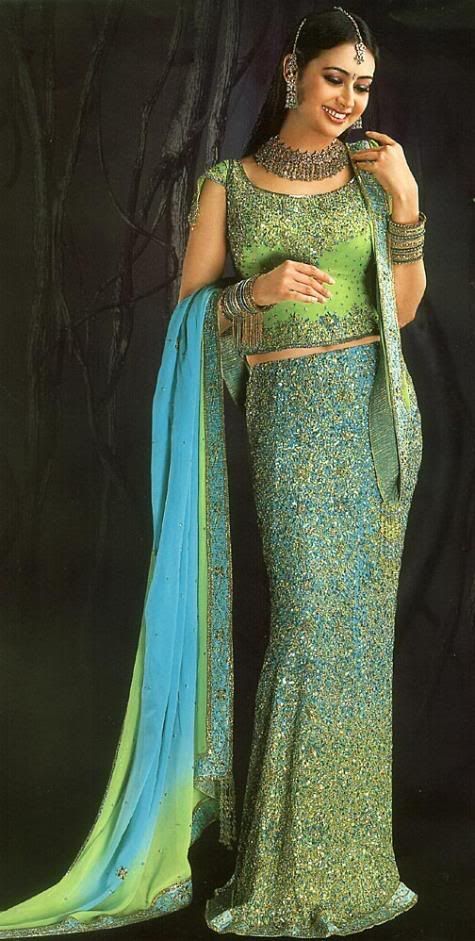



Choli:
The tightly fitted complimentary colored, short blouse worn under a saree is a choli. Originally, cholis only covered the front, now they have evolved to include versions covering front and back to midriff. The traditional form is still commonly worn in Rajastan.
Lehanga:
This is a pleated skirt worn mostly in Rajastan. Worn with a choli, it is secured at the waist, leaving the back and midriff bare. A length of fine cotton called a dupatta, completes the ensemble, covering the head.
As we step in the new millenium,let's indulge in little bit of retrospection,the key moments in fashion, triggered by various socioeconomic movements during the twentieth century. For what we know of the history of fashion until the end of the 19th century,it was mostly a fascinating footnote to the history of art. Much has changed and evolved in the history of fashion in the 1900's. It's a stirring,exotic trip with detours aplenty-from the Fallper girls of the '20s in their Channel dresses to the sheer elegance of Maharani Gayatri Devi's pastel chiffon sarees, to the innocent candy coloured can can dresses of the '50s Americana to the dark, stylish paired down dressing of the '90.
When the century dawned, fashion was an exclusive enterprise,the pursuit of the wealth. The lower tiers of the society settled for garments that were more often than not entirely family hand-made-downs or stitched at home.With time, however,networks of neighbourhood tailors began to evolve into a retail history and the boom followed by boutique selling. Today, garments are laser cut by computers and sourced from all over the world and can easily be bought sitting in the comfort of one's home via the internet.
Each decade of this century ushered greater progress. "During the '20s, one of the greatest influences on dress code was the movement towards equal status for women. Hence, a new breed of business-like women emerged and made corresponding demands on their dress, says A.K.G Nair, Director, Pearl Academy of Fashion. "The obvious choice for silhouette veered towards dropwaist or box and the choice of colour was black and grey and the fabrics preferred were silk and georgettes. "he says.
"In India, the fashion scenario was in confusion as it was a turbulent period of conflicting ideologies, when the consciousness of an Indian national identity was beginning to find political expression and the struggle for Indian independence was getting momentum, "says fashion diya Ritu Kumar. Thus the fashion trends within high society, read the loyalty, was strongly influenced by the British with the result that western clothes became a status symbol.
The '30s heralded the idea of socialism,communism and fascism and women's fashion became more and more feminine in keeeping with conservative ideas. "However this period also saw the emergence of the vamp and the culture of cabaret, "says Nair, noting that hence the dresses became more body hugging and the colours deep and dark in tune with such themes.







































0 comments:
Post a Comment